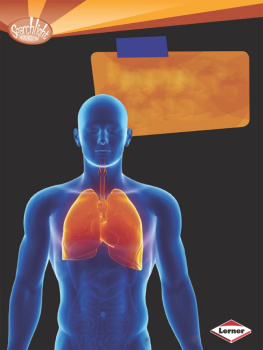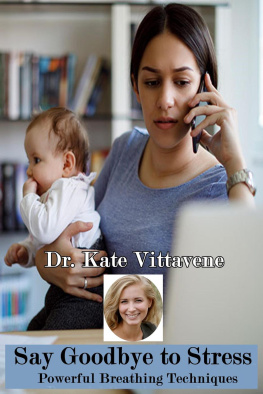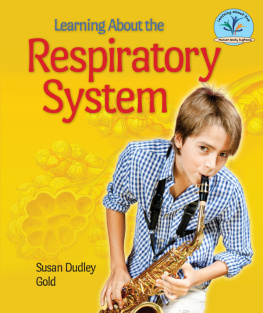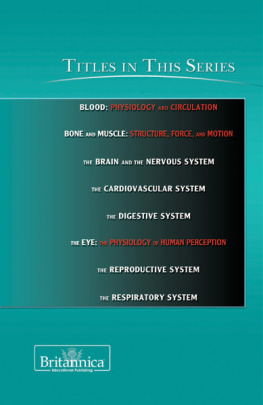
First Facts are published by Capstone Press,
1710 Roe Crest Drive, North Mankato, Minnesota 56003
www.capstonepub.com
Copyright 2015 by Capstone Press, a Capstone imprint. All rights reserved. No part of
this publication may be reproduced in whole or in part, or stored in a retrieval system, or
transmitted in any form or by any means, electronic, mechanical, photocopying, recording,
or otherwise, without written permission of the publisher.
Library of Congress Cataloging- in- Publication Data
Brett, Flora, author.
Your respiratory system works! / by Flora Brett.
pages cm. ( First facts. Your body systems)
Summary: Engaging text and imformative images help readers learn about their
respiratory system Provided by publisher.
Audience: Ages
Audience: K to grade
Includes bibliographical references and index.
ISBN 978- 1- 4914- 2067- ( library binding) ISBN 978- 1- 4914- 2251- ( pbk.)
ISBN 978- 1- 4914- 2273- ( ebook PDF) ISBN 978-1-4966-3368-2 (eBook)
Respiratory organs Juvenile literature. Cardiopulmonary system Juvenile literature.
Lungs Juvenile literature. Human physiology Juvenile literature. [ Respiratory
system.] I. Title.
QP121. B827 2015
612.2 dc23
2014023834
Editorial Credits
Emily Raij and Nikki Bruno Clapper, editors; Cynthia Akiyoshi, designer;
Svetlana Zhurkin, media researcher; Laura Manthe, production specialist
Photo Credits
Capstone, , AntiMartina (dotted background),
,
Maya2008, ,

Table of Contents

Breathing and Blowing
Your respiratory system is always in
motion. It works when you blow bubbles,
talk to a friend, or sleep.
The respiratory system includes your
lungs, airways, and muscles.
This system works with your other body
systems. It helps keep your body healthy
and active. Without your respiration system,
you couldnt breathe!
Fact:
Your lungs breathe in more than
2,100 gallons (7,950 liters) of air
every day.
respiration the process of
taking in oxygen and sending
out carbon dioxide

The Respiratory System
nasal cavity
nostril
pharynx
epiglottis
larynx
trachea
pleural
cavity
primary bronchus
lungs
diaphragm

Gases In and Out
Your body needs a gas called oxygen
to live. The cells in your body get
energy from oxygen and food.
When you breathe in, air carries
oxygen into your body. When you
breathe out, your body gets rid of
carbon dioxide. Carbon dioxide
is a gas that your cells give off as
waste. Too much carbon dioxide is
poisonous to the body.
Fact:
You cant live for more than a
few minutes without oxygen.

A swimmer fuels
up with new oxygen.

When You Take a Breath
When you breathe in, air enters your nose or
mouth. From your nose, air travels to the nasal
cavity. This is a little cave behind your nose.
Here the air gets warmed, moistened, and
cleaned before it travels to the lungs.
Hairs in the nose trap dirt from the air.
In the nasal cavity, a thick liquid called
traps more germs and dust. Tiny
hairs called line the nasal cavity. Cilia
keep mucus moving toward your nose and
mouth. You sneeze or cough out the mucus.
Fact:
Healthy nose cilia move back and
forth to times per second.

body parts involved
in breathing
mucus a slimy liquid that
coats the inside of a persons
breathing passages
cilia short hairs that line the
nasal cavity

Getting to the Lungs
Next, air travels down the throat to the
, or voice box. Your larynx holds your
. You use these to talk.
Then air flows through a tube called the
. The bottom of the trachea splits
into two airways. These airways carry air to
the two lungs. Air travels through smaller
airways in the lungs. Then it reaches tiny air
sacs called alveoli. Oxygen passes through
the walls of the alveoli and into the blood.
larynx the upper part of the trachea that holds the vocal cords
vocal cords bands of skin in a persons air pipe; air from the
lungs passes through the vocal cords; this causes the vocal
cords to vibrate and make sound
trachea the air passage that connects the nose and the mouth
to the lungs

Alveoli look like tiny bunches of
grapes inside the lungs. Fact:
One adult lung has about
million alveoli.

Lungs and Diaphragm
Take a deep breath in. Your
muscle pulls your lungs down. At the same
time, your rib muscles push your chest out.
These actions let your lungs get bigger as
they fill with air.
When you breathe out, your diaphragm,
rib, and chest muscles relax. Your lungs
shrink as air is pushed out of them.
diaphragm the muscle under your
lungs that moves when you breathe

Fact:
Hiccups are sudden
movements of the diaphragm.

Lungs and Heart
The lungs and the heart trade gases at the
alveoli. The heart pumps blood through blood
vessels. Small blood vessels called
surround the lungs alveoli. Oxygen travels
from the alveoli into the capillaries.
Blood carries oxygen to the heart and then
throughout the body. Blood also carries
carbon dioxide to the heart. Your heart
pumps blood filled with carbon dioxide
back to the alveoli. Carbon dioxide leaves














 A swimmer fuels
A swimmer fuels
 body parts involved
body parts involved
 Alveoli look like tiny bunches of
Alveoli look like tiny bunches of
 Fact:
Fact: